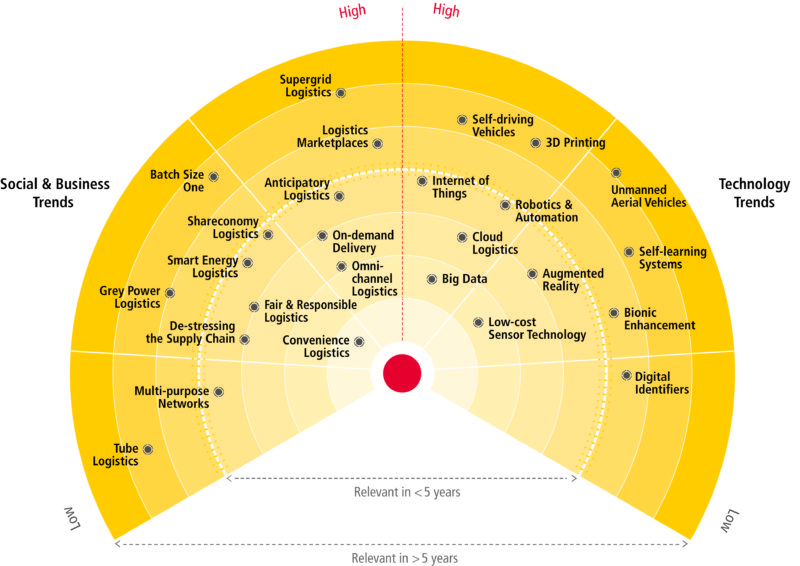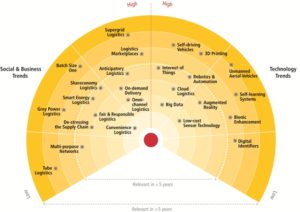“Self-learning” systems and personalized service are two of the biggest developments emerging in logistics today, according to a new study by DHL on social, business, and technology trends that are rapidly transforming the industry landscape.
Machines that can learn and products that are tailored to consumers’ specifications are among the 26 key trends that could impact the logistics industry in the next five to 10 years, according to DHL’s new 2016 Logistics Trend Radar.
The study is the third in a series that introduces brand-new trends and tracks the evolution of earlier trends.
The 2016 Logistics Trend Radar provides insights and information on ongoing transformations and latest trends likely to shape the future of logistics—from macro trends such as the changing energy and trade landscape to micro trends such as logistics startups unbundling the logistics industry.
It also reveals what sectors will be affected by developments as well as time frames for potential impact or introduction over the next decade.
“Artificial intelligence and personalization are behind several of the most transformational trends of the 2016 report—including intelligent supply chains that use self-learning or ‘machine learning’ systems,” said the report. “The impact of data-driven and autonomous supply chains provides an opportunity for previously unimaginable levels of optimization in manufacturing, logistics, warehousing and last mile delivery that could become a reality in less than half a decade despite high set-up costs deterring early adoption in logistics.”
Meanwhile changing consumer behavior and the desire for personalization are behind two other top trends, batch size one and on-demand delivery.
Set to have a big impact on logistics, on-demand delivery will enable consumers to have their purchases delivered where and when they need them by using flexible courier services.
Batch size one explores what could happen as consumer demand for highly personalized products goes head to head with mass production over the next 20 years. A batch size of one would lead to decentralized production and rapidly changing supply chains that will require logistics providers to be fast and flexible to react to changes in time and place of production.
The Logistics Trend Radar also includes an in-depth analysis of emerging trends and sector-by-sector impact and insights from industry thought-leaders such as the World Bank, Fraunhofer Institute, HP, and 500 Startups on the future of the logistics industry.
“Key trends featured in this year’s Logistics Trend Radar could transform the global logistics industry and with 15 of the 26 trends likely to make an impact in under five years, it is crucial that anyone involved in supply chain management and logistics understands these potentially game-changing developments and the implications for their own business or sector now,” said Matthias Heutger, senior vice president for strategy, marketing & innovation at DHL.






